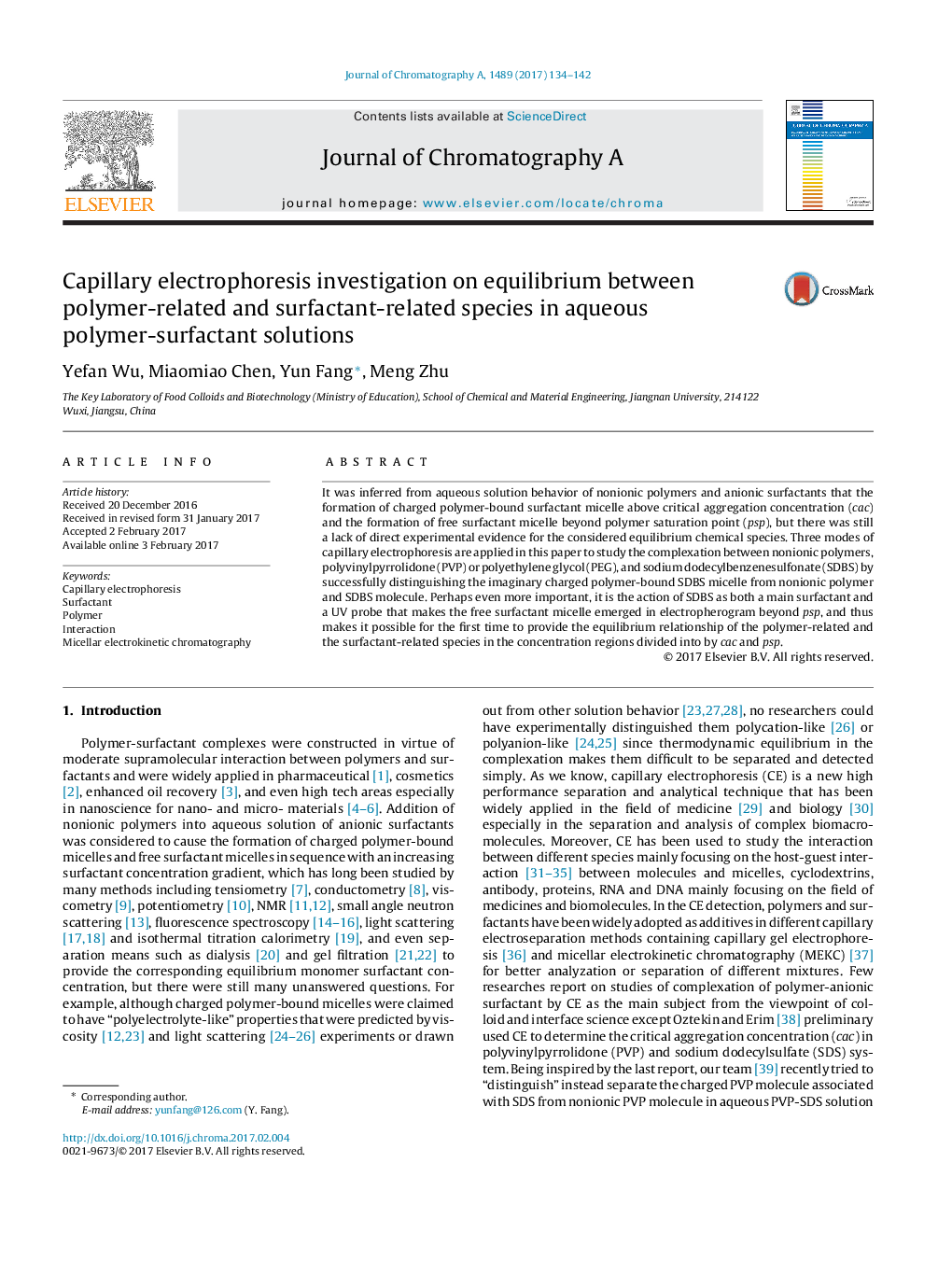| Article ID | Journal | Published Year | Pages | File Type |
|---|---|---|---|---|
| 5135466 | Journal of Chromatography A | 2017 | 9 Pages |
â¢Polymer-SDBS complexation is identifiable by capillary electrophoresis.â¢Capillary electrophoresis verifies free SDBS micelle emerging beyond psp.â¢Polymer-bound SDBS micelles are pseudo-polyanions.â¢Equilibrium of various chemical species is identified by combination of three CE modes.
It was inferred from aqueous solution behavior of nonionic polymers and anionic surfactants that the formation of charged polymer-bound surfactant micelle above critical aggregation concentration (cac) and the formation of free surfactant micelle beyond polymer saturation point (psp), but there was still a lack of direct experimental evidence for the considered equilibrium chemical species. Three modes of capillary electrophoresis are applied in this paper to study the complexation between nonionic polymers, polyvinylpyrrolidone (PVP) or polyethylene glycol (PEG), and sodium dodecylbenzenesulfonate (SDBS) by successfully distinguishing the imaginary charged polymer-bound SDBS micelle from nonionic polymer and SDBS molecule. Perhaps even more important, it is the action of SDBS as both a main surfactant and a UV probe that makes the free surfactant micelle emerged in electropherogram beyond psp, and thus makes it possible for the first time to provide the equilibrium relationship of the polymer-related and the surfactant-related species in the concentration regions divided into by cac and psp.
